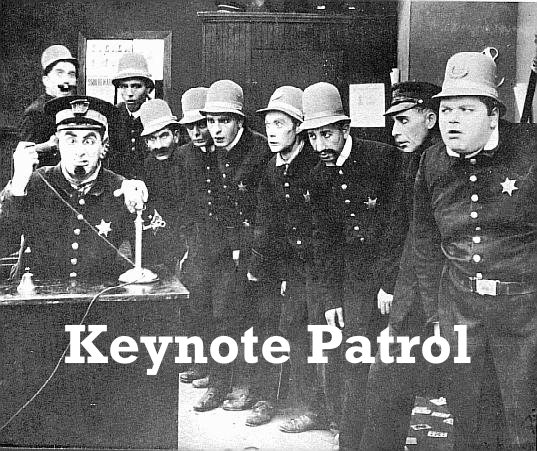
We all know by now that I’m not a huge fan of keynotes. While I’ve pulled back in recent years from the all out snark during industry keynotes, it’s nice to see that friends like Justin Warren (@JPWarren) and Corey Quinn (@QuinnyPig) have stepped up their game. Instead, I try to pull nuggets of importance from a speech designed to rally investors instead of the users. However, there is one thing I really have to stand my ground against.
Celebrity Keynotes.
We’ve seen these a hundred times at dozens of events. After the cheers and adulation of the CEO giving a big speech and again after the technical stuff happens with the CTO or product teams, it’s time to talk about…nothing.
Celebrity keynotes break down into two distinct categories. The first is when your celebrity is actually well-spoken and can write a speech that enthralls the audience. This means they get the stage to talk about whatever they want, like their accomplishments in their career or the charity work their pushing this week. I don’t mind these as much because they feel like a real talk that I might want to attend. Generally the celebrity talking about charity or about other things knows how to keep the conversation moving and peppers the speech with anecdotes or amusing tales that keep the audience riveted. These aren’t my favorite speeches but they are miles ahead of the second kind of celebrity keynote.
The Interview.
These. Are. The. Worst. Nothing like a sports star or an actor getting on stage for 45 minutes of forced banter with an interviewer. Often, the person on stage is a C-level person that has a personal relationship with the celebrity and called in a favor to get them to the event. Maybe it’s a chance to talk about their favorite charity or some of the humanitarian work they’re doing. Or maybe the celebrity donated a bunch of their earnings to the interviewer’s pet project.
No matter the reasons, most of these are always the same. A highlight reel of the celebrity in case someone in the audience forget they played sports ball or invented time travel. Discussion of what they’ve been doing recently or what their life was like after they retired. A quirky game where the celebrity tries to guess what they company does or tries to show they know something about IT. Then the plug for the charity or the fund they’re wanting to really talk about. Then a posed picture on stage with lots of smiles as the rank and file shuffle out of the room to the next session.
Why is this so irritating? Well, for one, no one cares what a quarterback thinks about enterprise storage. Most people rarely care about what the CEO thinks about enterprise storage as long as they aren’t going to shut down the product line or sell it to a competitor. Being an actor in a movie doesn’t qualify you to talk about hacking things on the Internet any more than being in Top Gun qualifies you to fly a fighter jet. Forcing “regular” people to talk about things outside their knowledge base is painful at best.
So why do it then? Well, prestige is one thing. Notice how the C-level execs flock to the stage to get pics with the celebrity after the speech? More posters for the power wall in their office. As if having a posed pic with a celebrity you paid to come to your conference makes you friends. Or perhaps its a chance to get some extra star power later on for a big launch. I can’t tell you the number of times that I’ve made a big IT purchasing decision based on how my favorite actor feels about using merchant silicon over custom ASICs. Wait, I can tell you. Hint, it’s a number that rhymes with “Nero”.
Getting Your Fix
As I’ve said many times, “Complaining without a solution is whining.” So, how do we fix the celebrity keynote conundrum?
Well, my first suggestion would be to get someone that we actually want to listen to. Instead of a quarterback or an actor, how about instead we get someone that can teach us something we need to learn? A self-help expert or a writer that’s done research into some kind of skill that everyone can find important? Motivational speakers are always a good touch too. Anyone that can make us feel better about ourselves or let us walk away from the presentation with a new skill or idea are especially welcome.
Going back to the earlier storyteller keynotes, these are also a big draw for people. Why? Because people want to be entertained. And who better to entertain than someone that does it for their job? Instead of letting some C-level exec spend another keynote dominating half the conversation, why not let your guest do that instead? Of course, it’s not easy to find these celebrities. And more often than not they cost more in terms of speaker fees or donations. And they may not highlight all the themes of your conference like you’d want with someone guiding them. But I promise your audience will walk away happier and better off.
Tom’s Take
Keynotes are a necessary evil of conferences. You can’t have a big event without some direction from the higher-ups. You need to have some kind of rally where everyone can share their wins and talk about strategy. But you can totally do away with the celebrity keynotes. Instead of grandstanding about how you know someone famous you should do your attendees a favor and help them out somehow. Let them hear a great story or give them some new ideas or skill to help them out. They’ll remember that long after the end of an actor’s career or a sports star’s run in the big leagues.










